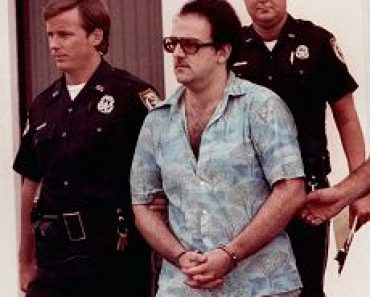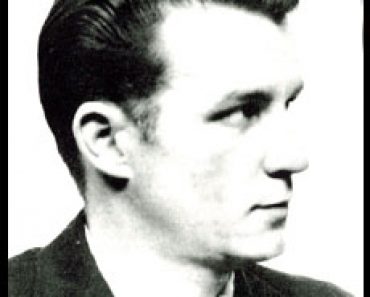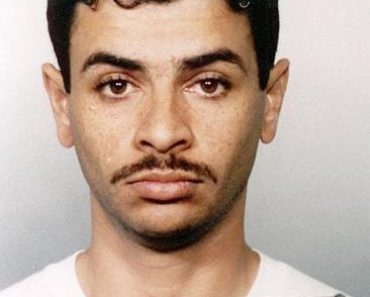Colin Ireland | Serial Killer
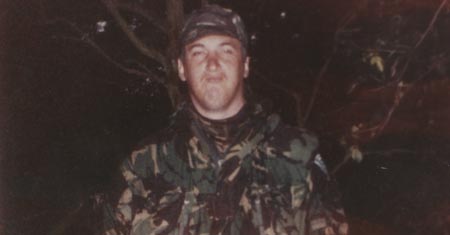
Colin Ireland
Born: 03-16-1954
Gay Slayer
British Serial Killer
Crime Spree:
Death: 02-21-2012
Colin Ireland is a British serial killer known as the ‘Gay Slayer’ due to the fact that his only victims were gay men. He murdered out of the anger that built in him due to his loss of innocence, through encounters with pedophiles when he was young. Ireland’s murders were not sexually motivated. He he had been married and claimed to be heterosexual.
Profile of Colin Ireland
Ireland’s parents were unmarried and in their late teens when his mother discovered she was pregnant at age 17. His father, wanting nothing to do with it, promptly left her. Ireland’s mother was upset at his decision but was unbending in her desire to have the baby. Ireland was born on 16 March 1954 in West Hill Hospital in Dartford, Kent. His mother refused to name the father on the birth certificate, and to this day, Ireland knows nothing of his father.
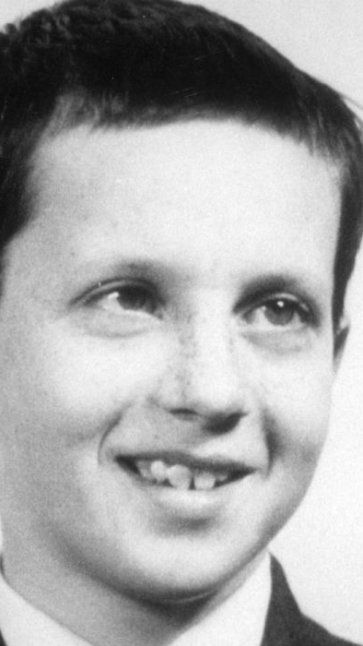
His mother worked as an assistant in a newsagent and on her meagre wage, found it increasingly difficult to support herself and her young son. Fortunately her parents were understanding and she and Ireland went to live with them and her brother in the family home in Myrtle Road, Dartford. They lived there for five years, until 1959, when Ireland’s mother decided she needed some independence and moved, with her son to Birch Road, Gravesend.
This was the start of six years of both physical and emotional upheavals, during which they moved nine times. Ireland’s mother was unskilled and had to rely on part-time and low-paid work. She was desperate to provide her son with a decent home and a stable upbringing but constantly found herself unable to cope. They moved back to family home within a year.
Young Colin Ireland
In 1960, they moved to Sidcup, Kent and later that year, to Westmalling, a camp of wooden huts for homeless women and children, in Maidstone. After only three months in this prison-like accommodation, Ireland and his mother moved back to her parents’ home. By 1961, his mother had new partner and the three of them moved to Farnol Road, Dartford, where they lived for the next three years. The couple married and Ireland’s surname was changed to that of his stepfather, Saker. An electrician by trade, Saker had a good sense of humor and treated young Colin Ireland well but was not the most responsible of fathers. He only worked sporadically and the family was financially unstable.
Ireland found it hard to settle at school due to the constant moving and he attended six primary schools between the ages of five and ten. Always labelled the ‘new boy’ and the odd one out, his thin, lanky frame and bow-legged stance brought him much verbal abuse and bullying. Ireland began being absent from school more and more frequently, often with his mother’s permission. When he did attend school, he would always arrive late, being punished by caning.
This meant that he did not get a proper educational grounding and consequently battled his way through high school. Ireland became a sad, lonely and withdrawn boy, always on the perimeter of the activity. His few friends were chosen because they were nonthreatening and Ireland tended to be quite immature for his age. He was not very athletic and was never chosen for the school football or cricket teams. He did however become a member of the Sea Cadets for two years, one of the few highlights in his youth.
Colin Ireland Is Abandoned Again
In 1964, at age 10, Colin Ireland and his parents were evicted from their Farnol Road home due to non-payment of rent. Ireland and his mother returned to Westmalling and, as no men were allowed, his stepfather went to live with his own parents. Later that year, Ireland’s mother discovered she was pregnant with her second child. Once again, despite her dire financial situation, she was determined to keep her baby. In order to afford to do so, she placed Ireland in care with a foster family in Wainscott, Kent. Ireland remembers this time as being very ordinary. A while after the birth of her second son, Ireland’s mother and step-father moved to a house in West Kingsdown and brought Ireland to live with them once more. Not long after this, Saker walked out on the family, leaving them penniless once more.
Through all of these upheavals, Ireland maintained a close relationship with his mother, remembering her as always being affectionate and benevolent and making personal sacrifices in order for her children to be clothed and fed. In 1966, when Colin Ireland was 12, his mother met and married another man but he refused to take on the man’s surname and reverted from Saker to Ireland, his mother’s maiden name. The family moved to Clyde Street, Sheerness in Kent, where they stayed for the following five years. The marriage turned out to be a long and stable one, with Ireland’s second stepfather a loving man who provided for his family and gave his wife the life she deserved.
The Anger Inside Colin Ireland
Whilst in Sheerness, Colin Ireland was approached on four occasions by older men wanting to have sex with him. The first of these encounters was when he was working at a fairground as a summer holiday job. One of the traders offered him a necklace for his mother in exchange for a sexual act.
The second, when he was 12, was in a public toilet. He was in a cubicle and a man in his late teens/early 20’s, peered over the top of the wall down at Ireland. Whilst he didn’t say anything, it was most disturbing for the young boy. The third instance was whilst he was watching a film at a local cinema. He was approached by the local optician wanting sexual favors. The fourth situation was with a man working for a second-hand shop. Ireland resisted their advances each time and there was no sexual contact but he was upset and filled with an anger and a feeling of violation, for which he had no outlet and which would not go away.
The Crimes of Colin Ireland
At age 16, in 1970, Colin Ireland committed his first crime. His general unhappiness with both his schooling and his home life made him decide to run away to London. He needed money to get there and stole the £4 he needed. He was caught, issued with a ‘fit person order’ and sent to Finchton Manor School in Kent. A fee-paying ‘free expression’ school, Finchton only accepted boys who had both intelligence and emotional problems. Ireland’s fees were paid by the local County Council as part of the care order.
Once again, Ireland was teased and bullied and, in a gesture of frustration and revenge, set fire to one of the boys’ belongings. This was his first act of arson but he later admitted to having had an unusual interest in fire from a young age and had recurring nightmares about fire throughout his life. A teacher managed to put the fire out, but Colin Ireland was sent away from Finchton Manor with a social worker. No charges, however, were brought against him. He immediately ran away to London once more.
Colin Ireland Starts A Relationship
Homeless and with no money, Ireland soon resorted to robbery. At age 17, he was caught and sentenced to spend time at Hollesly Bay. It was a borstal, a British reform school for youths between 16 and 22, providing therapy and vocational training. Ireland hated his time there and one day managed to escape and run away. It was not long before he was caught by the police and sent to serve the remainder of his sentence, from 1971 to 1972, in the far stricter borstals of Rochester and Grendon.
Released at age 18, Colin Ireland met his first girlfriend but described his mental state at this time as confused and unhappy.
In December 1975, age 21, Ireland was found guilty of two counts of burglary, stealing a car and damage to property. He was sentenced to 18 months in prison. He served 12 months in crowded London prisons before being transferred to Lewes prison. Upon his release in November 1976, Ireland went to live in Swindon where he met his second girlfriend and began his first sexual relationship. She was a black West Indian woman, five years his senior and the mother of four children. They lived together for a few months and planned to marry, although they never did.
Colin Ireland Gets Married
In 1977, Colin Ireland was found guilty of ‘demanding with menace’ and sentenced to a further 18 months in prison. It was a pattern that repeated itself and included being sentenced to two years imprisonment for robbery in 1980, two months for ‘attempted deception’ in 1981 and six months for ‘going equipped to cheat’ in 1985. Between his bouts in prison, being unskilled, Ireland took whatever temporary work he could find, including working as a volunteer fireman, a restaurant chef, a volunteer at a homeless shelter and a bouncer at various bars and a gay nightclub.
It was during a stint as a chef in London that Colin met Virginia Zammit in 1981, at a lecture on Survivalism. She was 36 (nine years his senior), had a daughter of five and was confined to a wheelchair after a motor vehicle accident paralyzed her at age 24. The couple were happily married in 1982 and Colin Ireland adored his wife and stepdaughter.
The family lived in estate housing in Holloway and Ireland was known to the locals as ‘The Gentle Giant’. Unfortunately, the brief happiness and stability was not to last and he was soon back in prison and becoming increasingly aggressive. The couple were divorced in 1987 after Ireland admitted to having an affair with another woman.
Another Wedding For Colin Ireland
In 1989, Ireland met Janet Young, the landlady of the Globe pub in Buckfast, Devon. She had two children, age 11 and 13, and lived with them above the pub. Within a week of meeting, Colin Ireland moved in with Young and within three months, they were married at Newton Abbot Register Office. Things seemed to be going smoothly, but after only four months of marriage, Ireland took his wife and her children to his mother’s house in Margate for a visit. Whilst there, he took his wife’s car, withdrew money from their joint bank account and disappeared.
By 1991, his second marriage had failed and he moved to Southend-on-Sea, Essex, roughly 40 miles (60km) east of London, on the north side of the Thames estuary. Here he worked at a shelter for the homeless, whilst being homeless himself. He was well liked at the shelter and felt an empathy with the people there. By December 1992, some of the staff began making unfounded allegations against Ireland and he eventually resigned. He was becoming increasingly frustrated by the lack of direction in his life and was tired of having to continually seek unskilled work.
A New Year Resolution For Colin Ireland
In early 1993, at age 39, a fraught and rage-filled Colin Ireland who had, until this point in his life, only committed minor offences, made a New Year’s resolution to become a serial killer. He was fascinated by serial killers and had spent many hours meticulously studying them. He was aware of Geographic Profiling that helps investigators locate the killer, who usually commits the crimes in a certain radius (about 7 miles) from where they live. For this reason, Colin Ireland chose London as his ‘murder ground’, deliberately misleading the police and keeping them far away from his Southend-on-Sea home.
The Coleherne Pub and Murder Number One
The Coleherne pub on Brompton Road, West London had a reputation in the gay community as a place to easily find a partner for the night. Punters would wear color-coded handkerchiefs to indicate their sexual proclivities, making cruising easy and avoiding misunderstandings.
Colin Ireland began frequenting the Coleherne and on 8 March 1993, he was posing as a ‘top’ (S&M master/dominant partner) when he met his first victim, 45-year-old choreographer Peter Walker. Walker, a ‘bottom’ (S&M slave/submissive partner) had approached Ireland in the pub and the two left together, heading off to Walker’s apartment in Battersea.
Walker willingly allowed Ireland to gag him with knotted condoms and bind him with cord to the four-poster bed, for what he thought was some foreplay but which soon turned excessively violent. Ireland had come prepared with a ‘murder kit’ containing some cord, a knife, a pair of gloves and a change of clothes. Once his victim was helpless, Ireland used a dog lead, a belt and his fists to administer a vicious beating and then at the height of his fury, pulled a plastic bag over Walker’s head and killed him by suffocation.
After The Murder
After burning the dead man’s pubic hair (Colin Ireland wanted to know what it smelled like), Colin spent time cleaning the apartment and removing any items that may have connected him to the crime. It was whilst he was looking through Walker’s personal effects that he found out Walker was HIV positive. The discovery so incensed him that he pushed a condom into the dead man’s mouth and another into his nostril. He also left two teddy bears in an approximation of a ‘69’ position on the bed next to Walker’s body.
Worried that he may raise suspicions with the neighbors, Ireland remained in Walker’s apartment until the following morning. He then traveled home to Southend on public transport, blending in with the early morning rush hour commuters. He disposed of his clothes, gloves and shoes from the crime scene by throwing them out of a train window, within the boundaries of the London transport system, something he was to do with all his murders.
Ireland had locked Walker’s dogs in one of the rooms of the apartment before the murder and later that day, he called the Samaritans to tell them where the dogs were, in order for them to be released. It was later surmised that this call was made to indirectly lead authorities to Ireland’s first victim.
The Coleherne Pub and Murder Number Two
The police soon discovered Walker’s body but had little evidence with which to proceed. They assumed it was an S&M sex game gone too far and turned to the gay community. They were not forthcoming, for two main reasons. Firstly, the police did not have a good reputation with them, often ignoring gay-related abuse and crime. Secondly, the day before Walker’s body was found, a new ruling had been passed, making S&M between consenting adults illegal. No gay man wanted to come forward with information, lest they be prosecuted themselves.
After a two-month break, Ireland felt the need to kill again and returned to the Coleherne pub on 28 May 1993 to search for his second victim. The man was 37-year-old librarian Christopher Dunn, who told Colin Ireland he liked to be dominated and invited him back to his flat in Wealdstone.
After watching an S&M video, Ireland told Dunn to go and get ready. He found Dunn in the bedroom, naked except for a studded belt and a body harness. The modus operandi was roughly the same as before. Making Dunn lie face down on the bed, Colin Ireland tied his feet together and handcuffed him. Once again he beat and tortured his victim, holding a lighter flame to Dunn’s testicles, before suffocating him to death by stuffing pieces of cloth into his mouth.
Taking The Payment To Kill
This time, Colin Ireland decided to reimburse himself for expenses incurred for the murders, as he was unemployed and living on state benefits. Prior to the murder, he forced Dunn to hand over his bank cash-card and PIN (Personal Identification Number). After cleaning up the crime scene, he stayed until he felt it was safe to leave. He then got rid of the gloves and shoes he had worn and went to Dunn’s bank and withdrew £200 from his account. Two days after the murder, a friend discovered Dunn’s body, on 30 May 1993. Once again, the police assumed a sex game gone wrong and did not immediately link the Dunn and Walker deaths.
The Coleherne Pub and Murder Number Three
Ireland’s thirst for murder was becoming stronger and a mere six days after the Dunn killing, he returned to the Coleherne for his third victim, on 4 June 1993. The man was 35-year-old Perry Bradley III, the son of a serving US congressman and himself, a businessman from Texas. Ireland accompanied Bradley to his Kensington apartment and soon suggested tying Bradley up as foreplay. Bradley was reluctant, as he was not into S&M, but relented when Ireland told him it was a necessary element in his own arousal. Ireland tied Bradley, face down on the bed, and placed a noose around his neck. He then demanded Bradley’s cash-card and PIN, threatening to torture him with a cigarette lighter if he did not comply. Frightened, Bradley offered to accompany Ireland to the cash point but he refused, making Bradley give him the PIN and telling him to go to sleep, which surprisingly, he did. Whilst he was asleep, Ireland killed him by slowly tightening the noose. He then placed a doll on Bradley’s dead body.
After conducting his usual and thorough search and clean up, Ireland left the apartment the following morning with £100 he had found and went to the bank to withdraw a further £200 from Bradley’s account. Once again, the police investigating the murder did not link it to the Dunn or Walker killings.
A Desire For Fame
Colin Ireland was becoming frustrated at the failings of the police to link his first three murders and the lack of publicity they were getting. He sought fame and only three days after his last murder, Ireland decided to kill again.
On 7 June 1993, Colin Ireland returned to the Coleherne Pub where he met his fourth victim, 33-year-old Andrew Collier who worked as a warden at a sheltered housing complex. They returned to Collier’s Dalston flat, where he consented to being bound to the bed and handcuffed. Once again, Ireland demanded his victim’s bankcard and PIN and when Collier refused, strangled him with a noose.
In the search and clean up, Ireland discovered that Collier was HIV positive and hadn’t told him. His fury led him to burn various parts of Collier’s body and to strangle his cat. In an act of humiliation, he put a condom on Collier’s penis and another on the cat’s tail, positioning the cat so that its mouth was around Collier’s penis and its tail was in Collier’s mouth. Colin Ireland took the mug he had used and £70 he had found in the flat and left the next morning during rush hour.
The Cops Finally Start Linking The Murders
Police finally linked two of the murders, those of Walker and Collier, due to the similarities of the scenes, as well as the strange use of condoms. They were beginning to suspect the work of a serial killer and had started to collate information on similar murders in the London area. They had also lifted a set of fingerprints from a window frame in Collier’s flat that they later discovered were Ireland’s.
On the 12th of June in 1993, Colin Ireland called the Kensington police, claiming he had killed four men and they had to stop him from killing again. He then called the Battersea police, asking them if they were interested in the murder of Peter Walker and why they had stopped the investigation. He told them he would kill again, as he had always dreamed of committing the perfect murder.
Ireland’s fifth and final victim was 41-year-old Maltese chef Emanuel Spiteri, who enjoyed dressing in leather. On the night of June 12th, the two men met at the Coleherne Pub and then went, via a series of trains, to Spiteri’s flat in Catford. Immediately upon arrival, Ireland bound Spiteri to his bed, handcuffed him, put a noose around his neck and demanded his cash-card and PIN. Ireland then strangled Spiteri with the noose. He cleaned up and watched television until he felt it safe to leave the following morning. Before leaving however, he attempted to set fire to the flat. He hoped the whole block would catch fire, but in fact the fire went out in Spiteri’s bedroom, where it had been started.
Colin Ireland Had Reached Serial Killer Classification
Colin Ireland had now killed four times in 17 days. On June 13th, Colin rang the police, telling them to look for a body at the scene of a fire in south London. He also told them he had read many books on serial killers and that to reach a ‘serial’ classification by the FBI, the killer had to have five victims. He said he could now stop, as he had killed five times, adding he just wanted to see if it could be done and would probably not do it again.
On June 15th, Spiteri’s landlady called the police to report his death.
The Public Was Warned
A huge publicity campaign began, with a press conference being called for the head of the police inquiry, Detective Superintendent Ken John, to report that five homosexual men had been murdered and were linked as a series, both pathologically and forensically. The murders of Walker and Collier had already been connected, but now Dunn, Bradley and Spiteri were added to the list. John appealed to the gay community to be on the alert and to let friends know of their whereabouts if they went anywhere with a stranger. He speculated that the killer may have AIDS and that the possible motive for the murders was revenge.
On June 17th 1993 John made a direct appeal, via the media, to the killer to give himself up, saying he wanted to talk to him and offer him help. On June 19th, police handed out flyers at the London Gay Pride festival, attended by 50,000 people, appealing anyone with information about the murders to come forward.
The Profile
Psychologist Dr. Mike Berry was approached by the police to draw up a profile of the killer. In it he maintained that the killer was fueled by violent fantasies but each murder was never as good as the fantasy and he therefore was driven to kill again. He also believed that the killer was not HIV positive and was not committing the murders as an act of revenge.
Another psychologist, Dr. Jonas Rappeport, agreed with this synopsis and added his belief that the killer was not himself homosexual, but posing as a gay man in order to attract his victims. He was well organized, probably of large build and physically strong, which made him confident in his ability to overpower his victims.
The police gained further advice from criminal psychologists Paul Britton and Dick Walter, as well as ex FBI Agent and serial killer specialist, Robert Ressler.
The Description
On June 24th, the police issued a description of a man who had been seen with Spiteri on the train from Charing Cross to Hither Green, on the night in question. The description was of a white male, age 30-40, over 6 feet tall, clean shaven, a full to fat-ish face, short dark brown hair and dirty, dis-colored teeth. From this, they were able to produce an E-Fit (Electronic Facial Identification Technique) a computer-generated likeness, based on verbal descriptions.
A week later, on July 2nd, police released a picture of the man with Spiteri, taken on the train’s security camera, and he was very similar to the man on the E-Fit. They appealed for him to come forward for questioning, confirming that the lines of communication were open. The following day, police received over 40 calls, some of which were from men saying they had seen or talked to the man in the Coleherne Pub.
Colin Ireland Steps Foreward
On July 19th 1993, Colin Ireland went to his solicitor in Southend-on-Sea and told him that he was with Spiteri on the night in question. He confirmed that it was he in the train’s security camera picture but that he had not killed Spiteri. He claimed to have left Spiteri in his flat with another man.
This collated information, combined with the fingerprints Ireland had left on Collier’s window ledge, was enough for him to be arrested and charged with Collier’s murder on July 21st. 1993. Two days later, he was charged with Spiteri’s murder.
Colin Ireland was sent to prison, where he continued to maintain his innocence.
There Was No Trial For Colin Ireland
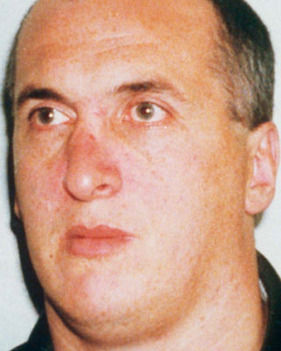
No trial was held as, while in remand in prison, Colin Ireland confessed on August 19th 1993 to the murders of five homosexual men. Showing no emotion, he gave police calculated descriptions of the killings. On August 20th, at the Old Bailey, London, Ireland was charged with the murders of Walker, Dunn, Bradley, Collier and Spiteri and sentenced to life imprisonment for each of the five killings. His name was on the last published list of whole life tariff prisoners, meaning that he will stay in prison for the rest of his natural life.
In Ireland’s full and frank confession to all his crimes, he emphasized four particular points. Firstly, that he had not been under the influence of drugs or alcohol at the time of the murders. Secondly, that he was not gay or bisexual, even though he had once worked as a bouncer at a gay club in Soho. Thirdly, that he had not undressed or engaged in any sexual activity with his victims and had gained no sexual thrill from the murders. Fourthly, that he held no grudge against the gay community and that he had chosen gay men as his victims simply because they were easy targets.
He claimed it was extreme male deviancy that triggered his anger, which had begun with his brushes with pedophiles in his youth. Colin said his victims were deviants (all into S&M sexual behavior) who just happened to be gay. He saw himself as ridding society of vermin and craved recognition as a superior person.
Psychologists saw the strategic placing of items related to childhood on the victim’s body – the teddy bears, the doll and the cat – as symbolic of Ireland’s abhorrence at the loss of innocence.

source: murderpedia | Carey Latimore
This site contains affiliate links. We may, at no cost to you, receive a commission for purchases made through these links


























































